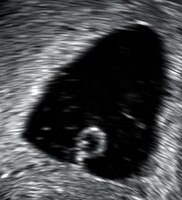
Photo from wikipedia
OBJECTIVES Hypospadias is a congenital disease characterized by morphological abnormalities of the penis, including abnormal urethral opening and penile flexion, which cause urination disorders and/or sexual intercourse difficulty. Various factors… Click to show full abstract
OBJECTIVES Hypospadias is a congenital disease characterized by morphological abnormalities of the penis, including abnormal urethral opening and penile flexion, which cause urination disorders and/or sexual intercourse difficulty. Various factors have been suggested to cause this anomaly, but evidence concerning risk factors causing this anomaly is insufficient. We evaluated the etiology of hypospadias in Japan using the Common Database of the National Hospitals' Neonatal study group. STUDY DESIGN We retrospectively evaluated 7,865 male neonates registered in the NICU Common Database of the National Hospitals' Neonatal study group. The subjects were divided into two groups by the presence (n = 43) or absence (n = 7,822) of hypospadias. Statistical analyses were performed to compare nominal variables between the groups by Fisher's direct establishment calculation method and logistic regression analyses. RESULTS A univariate analysis showed significant between-group differences in hypertensive disorders in pregnancy (odds ratio [OR]: 4.02, 95% confidence interval [CI]: 1.95-7.90), placental weight <-1.28 standard deviation (SD; OR: 5.06, 95% CI: 2.45-10.32), abnormal placental cord insertion (OR: 4.7, 95% CI: 2.62-9.76), birth length <-2SD (OR: 10.56, 95% CI: 5.00-21.1) and birth weight <-2SD (OR: 8.17, 95% CI: 4.17-15.68). A multivariate analysis showed a significant between-group difference in hypertensive disorders of pregnancy (adjusted OR [AOR]: 2.30, 95% CI: 1.09-4.85), abnormal placental cord insertion (AOR: 3.69, 95% CI: 1.83-7.44) and birth length <-2SD (AOR: 3.44, 95% CI: 1.26-9.42). CONCLUSION Abnormal placental cord insertion, hypertensive disorders of pregnancy and birth length may be involved in hypospadias development in male neonates in conjunction with placental dysfunction in early pregnancy.
Journal Title: Birth defects research
Year Published: 2022
Link to full text (if available)
Share on Social Media: Sign Up to like & get
recommendations!